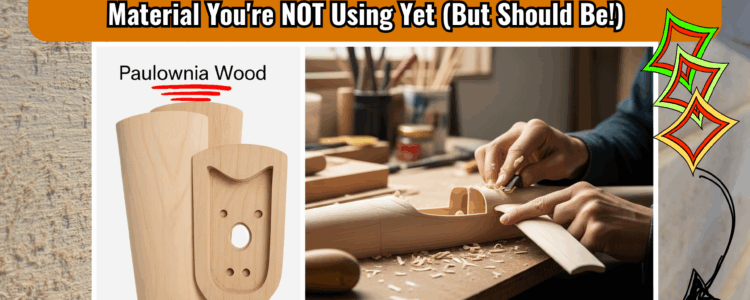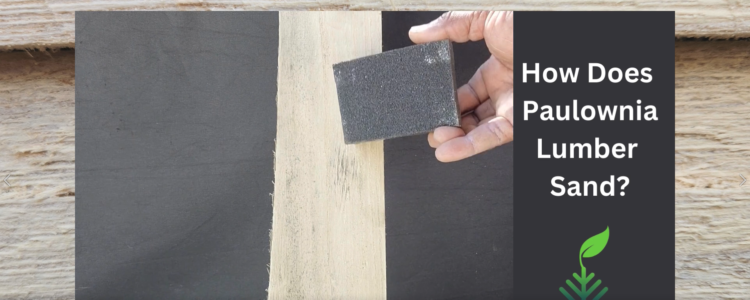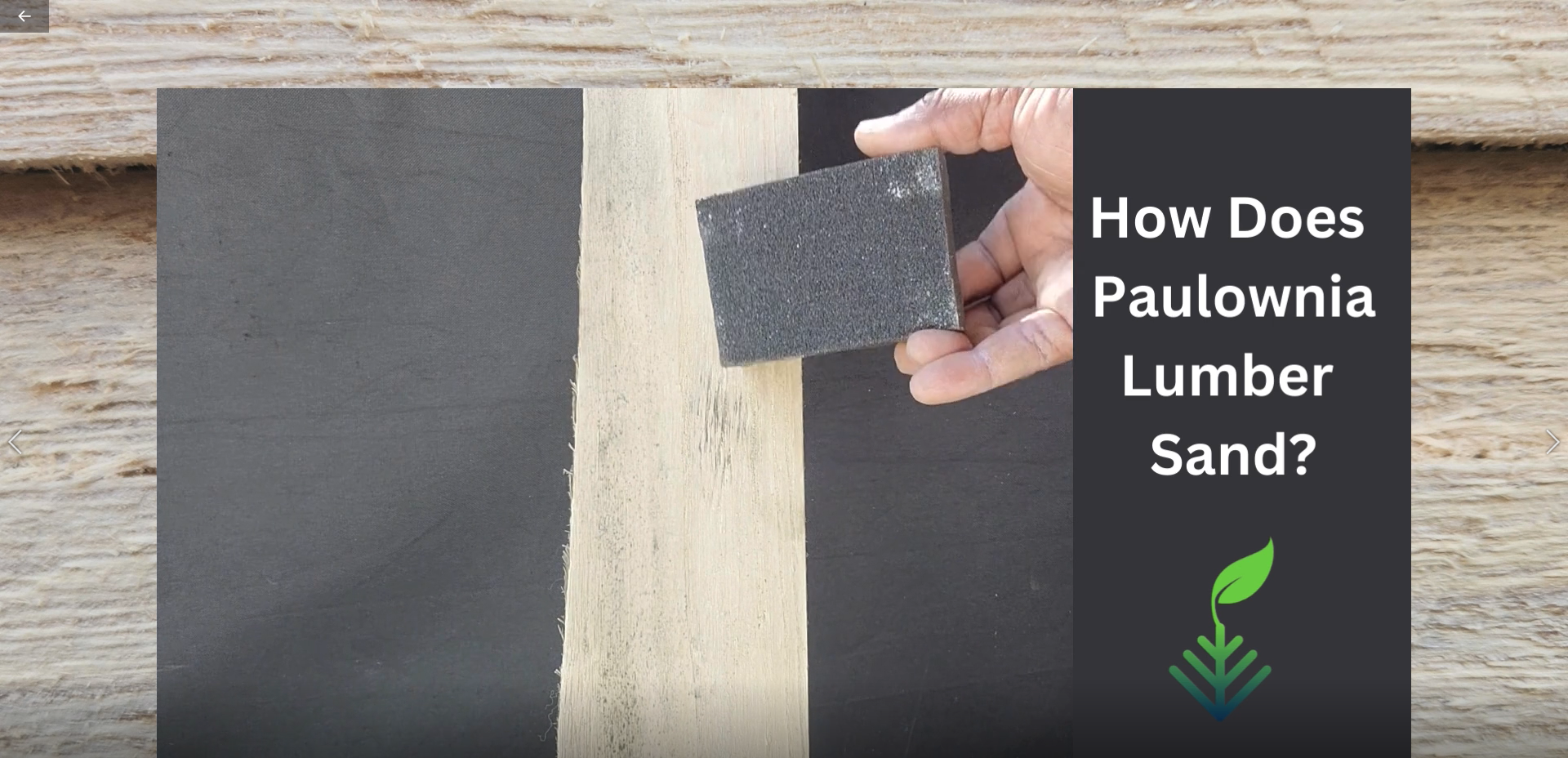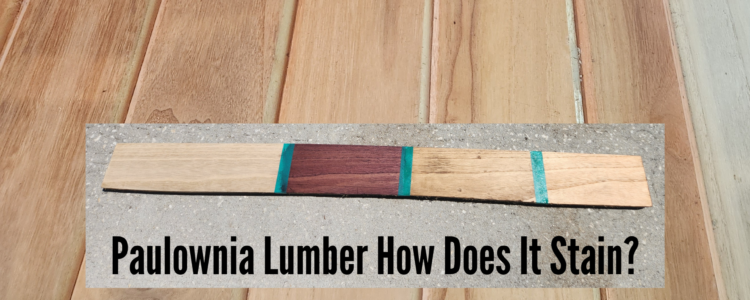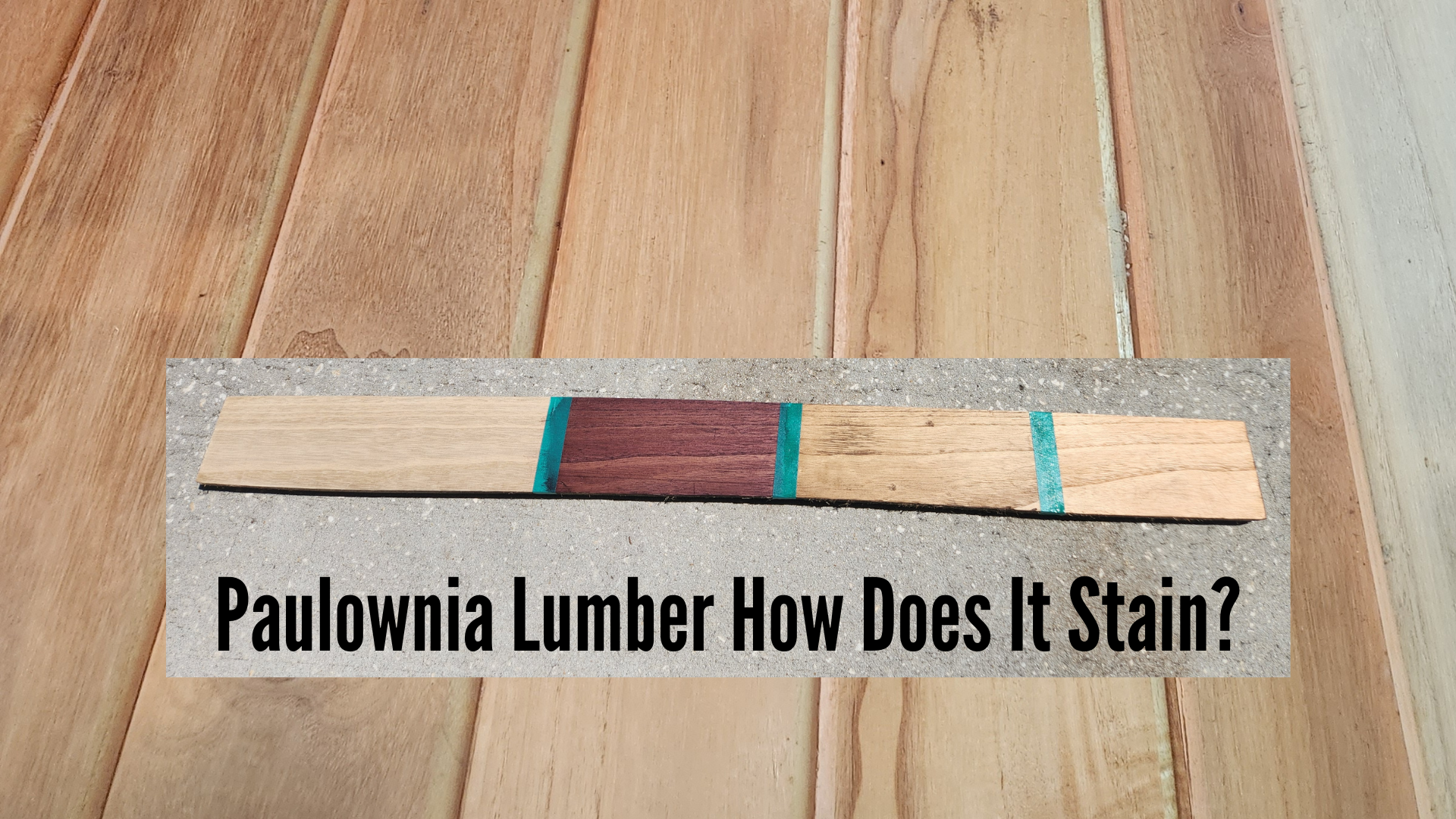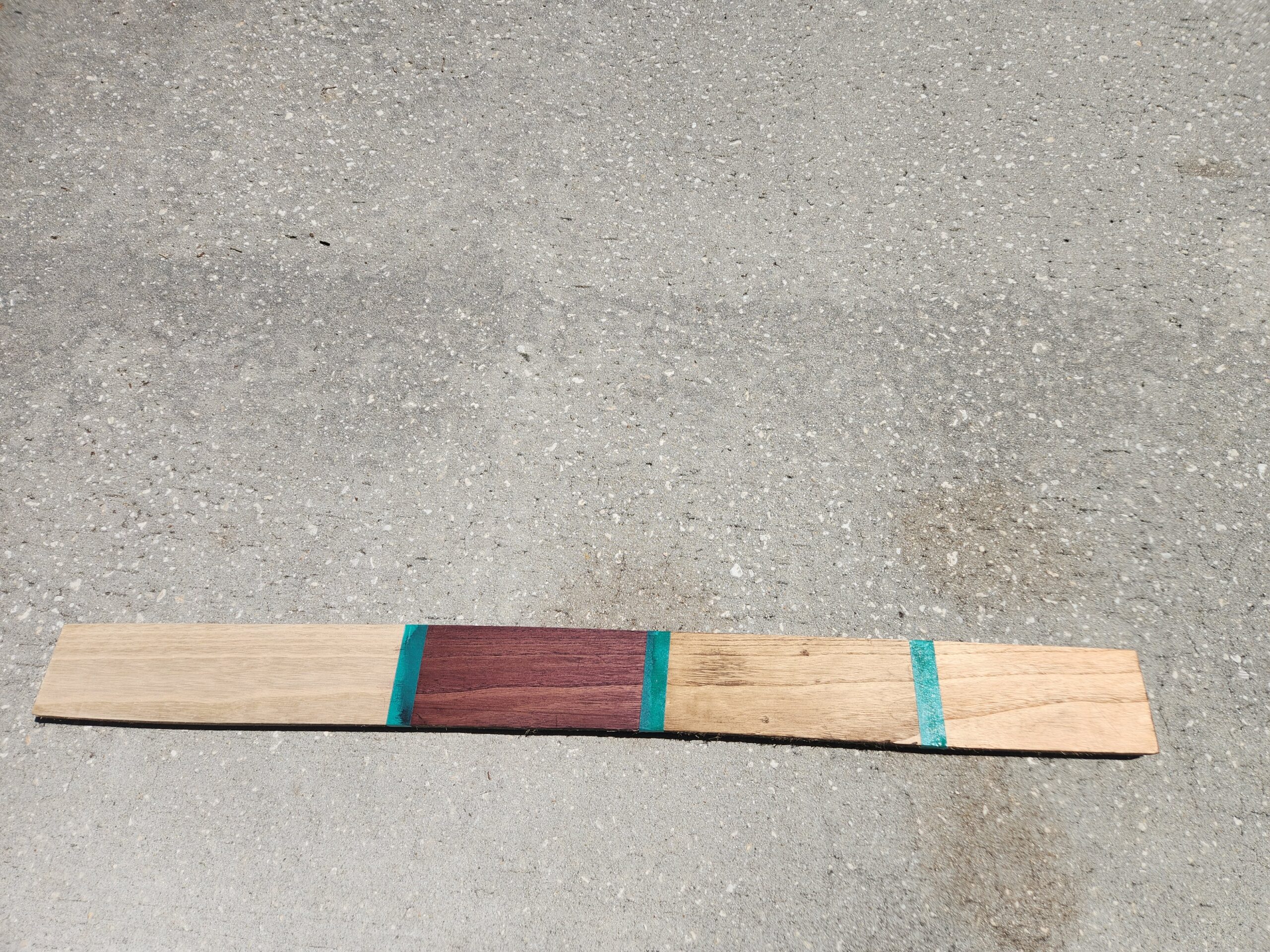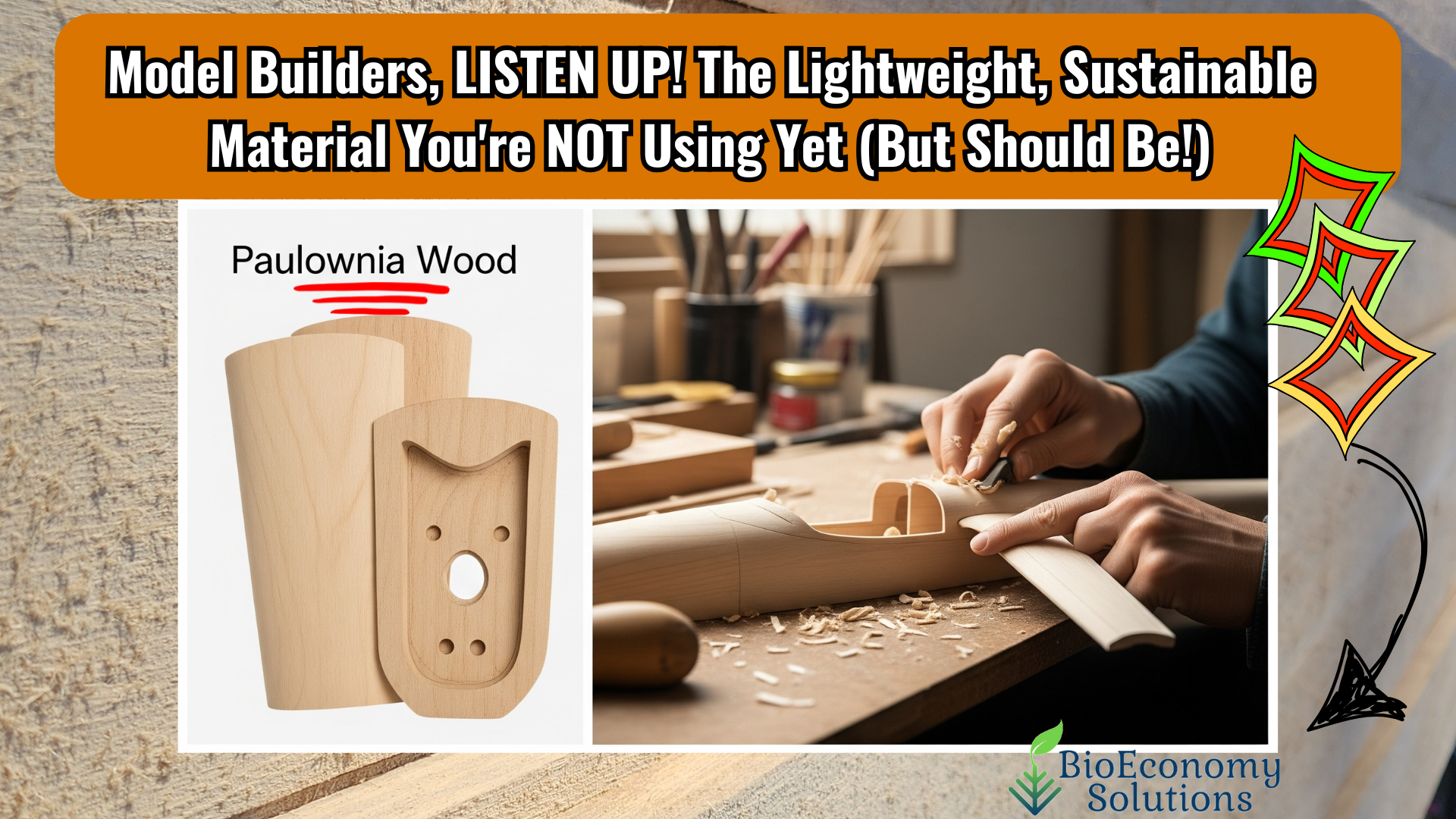
While Balsa wood has traditionally been the go-to material for aircraft models due to its exceptionally low density, Paulownia wood is gaining traction and is often considered a desirable alternative, particularly for its favorable strength-to-weight ratio.

The Difference
Here’s why some modelers might prefer Paulownia over Balsa:
- Higher Strength-to-Weight Ratio: Paulownia generally offers a better strength-to-weight ratio compared to Balsa, particularly at comparable densities. This means that while Paulownia might be slightly denser than Balsa, it can offer greater strength and structural integrity for its weight.
- Increased Strength: Paulownia is demonstrably stronger than Balsa wood. One source mentions that while Balsa’s Brinell hardness was significantly lower than Paulownia’s, it was only 22.8% lower, suggesting that Paulownia’s strength is notably higher.
- Reduced Resin Absorption: Paulownia has a less open grain than Balsa, meaning it absorbs less resin during construction. This can result in a lighter model overall, as resin contributes to weight.
- Space-Saving Benefit: Due to its inherent strength, Paulownia can be used in thinner sections compared to Balsa to achieve similar structural integrity. This can lead to space savings in the model’s design.
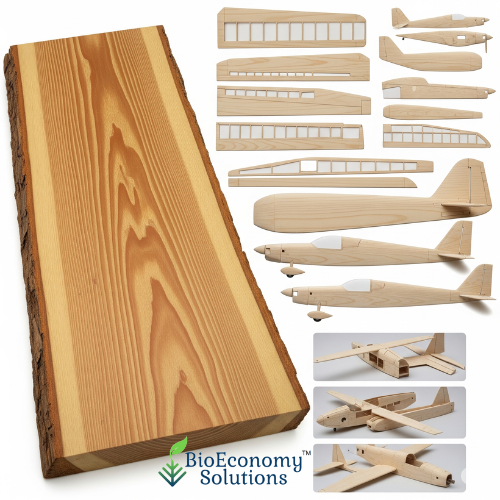
Also known as the “empress tree,” paulownia offers a unique blend of strength, lightness, and eco-friendliness—making it an excellent alternative for model manufacturers and hobbyists alike. In this post, we’ll explore:
What makes paulownia special
How it compares to balsa
Its growing role in model aviation
Where to find paulownia kits and materials
What is Paulownia Wood?
Paulownia (Paulownia tomentosa) is a fast-growing hardwood native to China but cultivated worldwide. Known for its rapid growth (up to 10 feet per year!), it’s a sustainable choice compared to slow-growing balsa.
Key Properties:
✔ Lightweight – Only slightly heavier than balsa, but stronger.
✔ Workability – Easy to cut, sand, and shape with hand tools.
✔ Stability – Resists warping and cracking better than balsa.
✔ Sustainability – Grows quickly, making it eco-friendly.

Best Uses for Paulownia:
Structural parts (spars, fuselage frames)
Foam-composite models (as a durable sheeting material)
Large-scale models (where extra strength is needed)
How Model Manufacturers Are Using Paulownia
While balsa still dominates traditional kits, paulownia is gaining traction in:
1. ARF (Almost-Ready-to-Fly) Kits
Companies like TW Models (The World Models) and HobbyKing now use paulownia in some ARFs to reduce costs while maintaining durability.
2. DIY & Scratch-Building
Experimental builders (e.g., Experimental Airlines on YouTube) use paulownia in foam-core designs.
Plans websites (AeroFred, RCGroups) feature user-designed paulownia models.
3. Laser-Cut Short Kits
Some small manufacturers offer paulownia laser-cut parts for custom builds, though availability is still limited compared to balsa.

The Future of Paulownia in Model Aviation
As balsa becomes scarcer and more expensive, paulownia is poised to become a mainstream alternative. Innovations in laser-cutting and hybrid designs (e.g., paulownia-foam composites) could make it even more popular.
For builders, the benefits are clear:
✅ More durable than balsa
✅ Better for the environment
✅ Cost-effective for large projects
The Choice
Paulownia is becoming a popular choice for aircraft modelers due to its superior strength-to-weight ratio and ability to save space while still maintaining structural integrity.However, Balsa’s lightweight nature and ease of use ensure its continued prominence in the hobby. The choice between the two often comes down to the specific requirements of the model being built and the preferences of the modeler.
Where to Buy Paulownia Wood for Model Building
Where to buy paulownia? We’re harvesting our mature U.S. South Carolina Paulownia Timber and have millions of board foot available. We can mill lumber for your business needs. Contact Us for details. Office: 843.305.4777 | Email: mail@bioeconomysolutions.com Here’s a link to our online calendar, schedule a conference call with us:
USA Paulownia Wood Lumber For Sale – Need paulownia wood lumber for your next project? https://bioeconomysolutions.com/paulownia-lumber/
You will discover that paulownia wood is the “Light Strong Alternative Wood” used in many processes to obtain many types of products.
Weather you are a hobbyist or full time manufacturing company, paulownia wood grown in South Carolina USA may be a new expression of your talent.
We sell Custom Paulownia boards: rough sawn or planed, we offer various sizes and thicknesses. Our Paulownia boards are processed using sustainable Paulownia hardwood grown right here in South Carolina USA.
LIKE|SHARE|COMMENT
Want more information on the Paulownia vs. Balsa? You may also enjoy this article: “Paulownia Wood v.s. Balsa Wood“

